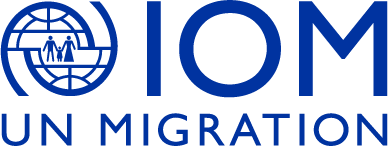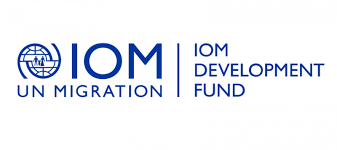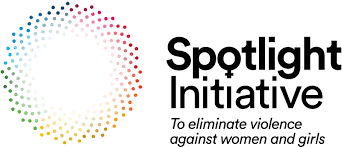IOM Vision
In partnership with the governments of Fiji, Samoa, Solomon Islands, Tonga, Tuvalu and Vanuatu, IOM will comprehensively address the vulnerabilities and drivers of displacement before, during and after crises. This includes the support to national and local authorities to effectively prevent, respond to and manage displacement; efforts to enhance resilience in at-risk communities to prepare for climate change and disaster-related human mobility; provision of comprehensive, targeted and life-saving humanitarian assistance to affected populations in times of disaster and ensuring continuation of essential services; and pursuit of pathways to durable solutions for communities displaced by disasters and affected by the long-term impacts of climate change.
Objective
Saving lives and protecting people on the move
In PICs, there is ample evidence to indicate that cautious planning and adequate preparation is required to avoid the worst impacts of unplanned movement as a result of climate change effects and disasters caused by hazards. In 2024, IOM will continue to:
- Support most vulnerable community members to have meaningful access to an adequate standard of living, including food, water, sanitation and hygiene, housing, health services and education, sustainable livelihoods and employment and support the respective NDMOs and NEMO;
- Strengthen the capacity of national and local government authorities and relevant ministries, NGO staff and volunteers, civil society, and community members to support preparedness and reduction of disaster risk particularly for most vulnerable communities, including trainings on evacuation centre management.
Given the frequency of disasters caused by natural hazards in the South Pacific region, IOM plans to:
- Provide non-food items (NFIs), shelter, water, sanitation, and hygiene (WASH) support to internally displaced persons (IDPs), disaster-affected communities and host communities in a safe and ethical manner;
- Provide mental health and psychosocial support (MHPSS) services for members of displaced communities;
- Provide support, under the Evacuation Centre Management and Displacement (ECMD) cluster, for temporary assistance and protection activities to displaced persons and communities as well as to communities that undertake pre-emptive evacuation;
- Support the National Disaster Management Offices (NDMOs) in Fiji, Samoa, Solomon Islands, Tuvalu and Vanuatu, as well as the National Emergency Management Office (NEMO) in Tonga, and humanitarian organizations.
Climate change and disaster-related programmes and policies need to be underpinned by data, evidence, and research – applying mixed methods and participatory methodologies. Ensuring that national ownership of data and research is in place, that collection and management of evidence is robust and well-integrated in the region, and that analysis and utilization capabilities are adequate are critical to ensuring the preparation of PICs is informed and effective. As such, IOM plans to:
- Engage with communities and local government actors (including cluster members) from Fiji, Samoa, Solomon Islands, Tonga, Tuvalu and Vanuatu through Displacement Tracking Matrix (DTM) training in alignment with data protection principles;
- Improve the capacity of relevant government ministries in Fiji, Samoa, Solomon Islands, Tonga, Tuvalu, and Vanuatu, research organizations and regional bodies to collect sex- and age-disaggregated data and evidence relevant to drivers of migration and displacement, climate change, planned relocation, and disasters. This will also strengthen data partnerships in alignment with IOM's data protection principles.
In partnership with national non-governmental organizations (NGOs), the International Federation of Red Cross and Red Crescent Societies (IFRC), Red Cross, and in collaboration with NDMOs, the NEMO and regional /national shelter cluster, IOM will address the shelter needs of internally displaced persons and disaster-affected communities, through:
- Conducting comprehensive needs assessments, with special consideration to persons with disabilities and other vulnerable groups;
- Providing NFIs and emergency shelter materials procured locally within the region, which can include claw hammers, hand saws, nails, pad bolts and solar lights, which can be used by households to fortify their residences as well as distribution of assistance through cash/ voucher modalities;
- Providing participatory settlement planning for temporary or longer-term shelter/housing and safe and dignified transportation to support voluntary return or relocation/resettlement (particularly in the case of those that remain displaced as a result of the Hunga-Tonga Hunga-Ha'apai (HTHH) disaster in Tonga);
- Providing information education and communication materials and training on house stabilization and risk reduction;
- Reviewing local supply chain options for emergency NFI procurement, and the establishment of long-term agreements.
In partnership with national health-nutrition (HN) and WASH clusters, and in collaboration with NDMOs and the NEMO, IOM will support addressing the needs of internally displaced persons and disaster-affected communities, through;
- Conducting comprehensive needs assessments, with special consideration to persons with disabilities and other vulnerable groups;
- Consulting communities to inform the provision of water, sanitation, and hygiene services. WASH services will be supported by local procurement (within country or region) of WASH items such as water distribution pipelines, water pumps, water storage, and water quality and treatment technologies for safe use and disposal;
- Capacity-building of HN and WASH clusters, NDMOs, NEMO and local communities to improve WASH services, including through awareness-raising and hygiene promotion .
Under the regional cluster on ECMD and in collaboration with NDMOs, the NEMOs, and relevant government emergency response actors, IOM will help address the needs of internally displaced persons and disaster-affected communities, where possible utilizing traditional knowledge and culture, through:
- Supporting national disaster management (and other) agencies in formulating national evacuation management policies, standard operating procedures, and standards for evacuation centres;
- Ensuring that the needs of vulnerable groups are considered during preparedness and emergency response through community feedback mechanisms and community dialogues on resilience, as well as establishing linkages to referral mechanisms to be shared at evacuation centres;
- Providing capacity-building to governments and NGO partners on the development of national cluster systems and implementation of an exit strategy for evacuation centres, return and reintegration of IDPs, and recovery planning for the displaced communities.
In partnership with NGOs, local civil society organizations (CSOs), NDMOs and NEMO, IOM will advocate and support the integration of mental health and psychosocial support (MHPSS) services and activities in emergency response and for communities displaced by disasters as well as by the long-term impacts of climate change, through;
- Community-based and interdisciplinary psychosocial mobile teams (PMTs) facilitating socio-relational activities, such as sport and play, art-based and creative activities, cultural activities and rituals;
- Establishing temporary Psychosocial Support Hubs in displaced communities to host activities organized by the PMTs and as a contact point for community members;
- Training of service providers and community focal points/health workers in psychological first aid (PFA), as well as developing capacity-building activities focused on mainstreaming MHPSS during community evacuation procedures and processes;
- Providing individual and group counselling to displaced communities and the establishment of peer support groups to foster communal resilience and recovery;
- Setting up a referral system to MHPSS services, including specialized mental health care.
In partnership with national disaster management and social services authorities, IOM will seek to integrate risk mitigation activities, and more broadly protection principles, throughout all response interventions, particularly those targeting evacuation centres and displaced communities, given the heightened risks in these settings. This will promote safety and dignity, reduce the risk of causing harm and support meaningful and inclusive access to assistance. Specifically, IOM activities will include:
- Implementing community capacity-building activities, such as trainings on referral pathways and community-based awareness raising, in alignment with the Guidelines for Addressing Gender-Based Violence (GBV) and other Protection Risks among displaced communities;
- Strengthening GBV risk mitigation in evacuation centres in line with IOM’s Institutional Framework for Addressing Gender-Based Violence in Crises through protection-oriented interventions, such as awareness-raising on referral pathways and capacity-building of community/traditional leaders in EC management;
- Promoting disability inclusion through meaningful access to services in evacuation centres, working with local OPDs on rolling out accessibility audits, promoting inclusion of people with disabilities in community preparedness and early warning through accessible communications and dialogue;
- Awareness-raising and referral mechanisms to support protection from sexual exploitation and abuse (PSEA) in evacuation centres and other displacement settings.
IOM plans to build the capacity of NDMOs, NEMO, and national NGO counterparts on data collection, data analysis and data management, including through training on the use of IOM’s DTM to support data-driven crisis response interventions. In the event that the national governments have limited capacity or time, IOM will look to implement DTM directly in support of governments and affected populations. Activities will include:
- Providing support for nationally owned displacement tracking mechanisms and climate mobility monitoring, to address emergency displacement and long-term mobility challenges resulting from sudden onset climate-related and geo-physical hazards, as well as slower onset displacement. This will be done through systems strengthening, capacity-building and direct implementation in partnership with disaster management authorities;
- Building the evidence base and guiding support by increasing understanding of climate mobility trends and projections through research: distinguishing types of mobility and the drivers of mobility in the region, examining impacts linked to losses and damages, generating statistics and proposing research efforts related to disaster risk reduction to partners.
IOM, in partnership with the NDMOs, will support evacuation management by:
- Rehabilitating/constructing multipurpose evacuation centres where gaps in emergency shelters are identified in high-risk and remote communities and retrofitting and upgrading community buildings to meet minimum standards of criteria for evacuation management;
- Ensuring that identified protection risks in evacuation centres are addressed and referral systems for child protection and GBV are put in place.
In addition, through the regional ECMD cluster under the humanitarian architecture of the PHT, IOM will support emergency preparedness by governments and cluster partners in the region by:
- Providing technical advice and support for information management;
- Strengthening localization and national capacities by organizing and providing displacement and evacuation management for partners (including government counterparts, NGOs, and community groups) to improve the overall understanding and capacity to carry out displacement/evacuation coordination, management, and administration activities. Displacement/evacuation training will aim to build the technical knowledge and capacities of displacement/evacuation practitioners to contribute to an effective settlement response and raise standards in the sector;
- Ensuring first responders are trained on how to safely refer child protection and trafficking cases during a response to a disaster;
- Ensuring first responders are trained on how to manage disclosures of GBV incidents in a safe and ethical manner;
- Strengthening approaches to accountability to affected populations (AAP).
Objective
Driving solutions to displacement
Climate change projections, even those within 1.5 degrees of global warming, suggest that PICs are facing several critical security threats that are likely to intensify the drivers of migration, displacement and planned relocation of Pacific Islanders and communities. Tonga and Vanuatu are the two countries with the highest relative average annual disaster displacement worldwide. In this context, IOM will scale up its efforts to:
- Protect vulnerable communities that have been impacted by displacement due to climate change impacts and disasters through durable solutions and access to essential services; such as those living along coastal communities, in low-lying areas and in flood-prone areas. This will include persons with disabilities, older persons, female-headed households and other vulnerable women, large families with a minimum of eight household members, and single parents;
- Support entities including key ministries and agencies within the Fiji, Samoa, Solomon Islands, Tonga, Tuvalu and Vanuatu governments and civil society to protect vulnerable communities that have been impacted by displacement or have the potential to face a displacement situation given their exposure to natural hazards and climate change, including reduction of disaster risk particularly for most vulnerable communities.
Conflict related to access to land rights, socioeconomic development and political dissent continues to occur across the Pacific. In 2024, IOM plans to:
- Support communities to manage local conflict, reduce violence and strengthen social cohesion;
- Protect migrants and displaced persons that are vulnerable to conflict, with conflict-sensitive attention to complex social dynamics and attention to gender, youth, human rights, and protection considerations.
In support of the United Nations Secretary General’s Action Agenda on Internal Displacement, IOM will collaborate with national and local authorities to develop and support progress towards the achievement of durable solutions for communities displaced by disasters and the long-term impacts of climate change. This will include people who remain displaced in Tonga as a result of the HTHH disaster. By utilizing a rights-based, participatory, and inclusive approach, adhering to the pillars of IOM's Progressive Resolution of Displacement Situations (PRDS) framework, IOM will achieve this by:
- Supporting community-based micro-credit schemes for traders and business start-up grants/packages, such as the provision of fishing boats, or other livelihood equipment, seed money or income-generating assets, to resume or kickstart small businesses;
- Supporting community-government meetings with broad participation aimed at resolving common issues of concern and pushing for community-driven development;
- Skills development trainings and cross-community knowledge sharing sessions focused on enhanced economic production and sustainable livelihoods.
Provision of water, sanitation and hygiene (WASH) is essential to the well-being of displaced persons. IOM will provide this support by:
- Strengthening management mechanisms at NDMOs and NEMO to allow them to deliver the human right to water and sanitation to affected populations, particularly during drought;
- Supporting community governance capacity-building for community-led management of WASH services, particularly during drought and in remote areas with limited access to safe drinking water;
- Supporting access vulnerable communities to have improved access to water;
- Supporting hygiene promotion activities under Objective 1, with long-term behaviour change strategies to improve public health and hygiene practices.
Drawing upon its experience supporting community-led conflict mitigation approaches within different conflict situations, IOM will work with communities to address underlying drivers of conflict, specifically as they relate to land use, given rising sea levels and land ownership laws across the South Pacific. This will look to strengthen community capacity to promote peaceful resolutions and respond to threats that might lead to violent conflict in high-risk areas. Activities will include:
- Assisting in developing community peace for development plans (CPDP);
- Conducting training for inclusive community facilitation teams on peacebuilding and development planning;
- Establishing and supporting diverse Community Facilitation Teams for leadership in development and peace initiatives;
- Developing referral pathways for protection and access to justice to support the Do No Harm principle.
Community-based disaster risk management (CBDRM) planning provides a holistic approach, encompassing the whole cycle of disaster risk management, in consultation with vulnerable groups within target communities. IOM plans to build the functional CBDRM capacity of government partners and target communities through:
- Mapping and assessing high-displacement risks areas;
- Improving the capacity of targeted disaster-prone communities in applying disaster risk management strategies;
- Ensuring vulnerable communities in disaster-prone areas have quality, timely and relevant information prior to and during hazard escalation, in line with the Early Warnings for All Initiative;
- Adaptation of community infrastructure to enhance resilience, particularly WASH infrastructure at the community level.
Ensuring communities are equipped with skills to manage evacuations in a safe, orderly, and coordinated manner is key to reducing the health-related impacts of displacement. IOM plans to carry out the following activities:
- Developing and updating key guidance documents, protocols and population mapping concerning the preparation, management and coordination of evacuation centres and displacement sites with respect to communicable diseases, alongside awareness-raising activities in coordination with NDMOs, NEMO, and national NGO counterparts;
- Strengthening health system capacities and climate resilience in close cooperation with national and local stakeholders to support uninterrupted provision of health services in the context of shocks to allow for continuity of care. Initiatives include training health workers and improving health infrastructure, such as climate-resilient health facilities with robust WASH and energy solutions;
- Upgrading critical evacuation centres, community health centres used in emergencies and other displacement sites to improve safety and hygiene. This will include the development of tools and guidance for site planning, including for contingency spaces, and quarantine areas;
- Prioritizing the engagement with internally displaced persons, evacuees, other people on the move and host communities in assessing risks, monitoring, and reporting mechanisms, planning, and implementing mitigation measures;
- Enhancing targeted and context-specific risk communication and community engagement (RCCE) to facilitate health promotion, hygiene sensitization, and awareness-raising activities; training community leaders for equitable healthcare access;
- Conducting Population Mobility Mapping (PMM) exercises in target locations, including at points of entry, transit, exit and in areas with high mobility flows to enhance preparedness.
Fiji, Solomon Islands, Tonga, Vanuatu, Samoa, Tuvalu
The map used here is for illustration purposes only. Names and boundaries do not imply official endorsement or acceptance by IOM.
Figures are as of 31 December 2023. For more details of IOM's operational capacity in country, please see the IOM Capacity section.









